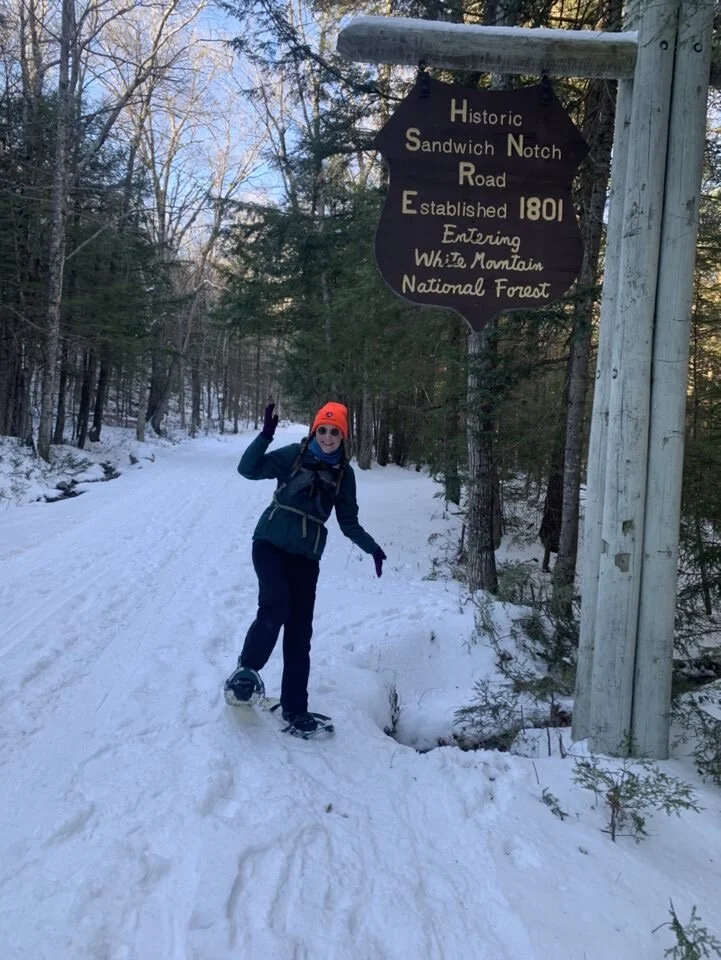A funny thing that is happening amongst the people I live and serve with is the differentiating of interests. We have all selected conscious or unconsciously one thing to be experts in, (Don't believe me? Maggy: pollinators and amphibians, Mikey: animal tracks and fungi, Daniel: all things birds, Mike: ice and geology, Kodi: Hiking and environmental education) there are some places where the knowledge intersects- but much of it is due to the expert sharing their knowledge.
This winter I got really into trees: it was partially a coping mechanism (something to fixate on when it was too cold or windy to go out for long hikes), and partially to satisfy my need to be a know-it-all. I learned the joys of calling out a plant by name over the summer of 2019 when wildflowers first caught my attention, and I always intended to learn trees once the less showy flora disappeared for the winter. Unfortunately, before this year I was a bit of a fair weather outdoorswoman, venturing out into the cold on only a select few days to ski.
My research (treesearch if you will) began with the National Audubon Society Field guide to Trees: Eastern region. I wanted a narrow glimpse into the trees native to this area, and something easy to put into a day pack. The color photos were also a plus. I started with only the common names, until I discovered how much they can overlap- ever heard of the black birch? This can actually refer to the river (Betula nigra), cherry (Betula lenta) or water (Betula occidentalis) birch trees- two of which are native to New England! Like Carolus Linneaus before me I have since learned the value of binomial nomenclature.
As my passion for trees has grown, I have been grappling with the question of forest management. A part of me wants to be intimately involved with restoring the forests and making sure they grow to their full potential. Another part of me knows that the best thing we could possibly do for our forests is to leave them alone. Forest ecosystems have their own methods for responding to disturbances- even if those disturbances are human caused and have been around for hundreds of years. This is made clear by the fantastic regrowth of primary and secondary forest that make up much of the Squam range.
The question of what we should use our forests for is a contentious one that pits foresters against conservationists, humanists against naturalists. Personally, I lean towards valuing nature for nature’s sake but I do recognize that much of what I do is supported by the land that once held vast forests and the actual wood from my friends the trees.
This is especially apparent to me as I split wood to prepare for campers coming to Squam Lake this summer. As a penance, I try to identify the wood by tree species- it feels a bit like the summer where I consciously ate meat only from animals raised by my family. Whether or not I participate in the process, trees are being used for human gain- the least I can do is understand them a little more.
One of my favorite questions to ask new people is “what is your favorite tree and why?” Personally, I have several responses to that question, but here are a couple:
Yellow birch (Betula alleghaniensis), mostly because it is aesthetically pleasing- who wouldn’t love a tree that shines golden in the sunlight? While the younger trees are beautiful for their shimmery bark, the older ones are amazing for their craggy trunk and imposing size- they're the largest species of North American birch.
Eastern hemlock (Tsuga canadensis) for their fierce sense of territoriality. There is some evidence that this hemlock has allelopathic effects on seed germination of other plants meaning that it may prevent competitors of other species from growing successfully. They are also incredibly shade tolerant meaning that a hemlock seedling can succeed in an established grove where the sun-loving pine maple, birch or oak would have difficulty growing. Due to their short needles that do not make much noise in the wind, hemlocks are a quiet tree and walking into a grove has always made me hush as if I were entering a place of worship. A relatively long lived species (up to 800 years), many of New England’s hemlocks were harvested in the 19th century to use in tanning leather.
We appreciate Cecilia’s ability to dive deeply into her passion projects, and then turn around and share her knowledge and enthusiasm with others. Learn more about Cecilia here!


